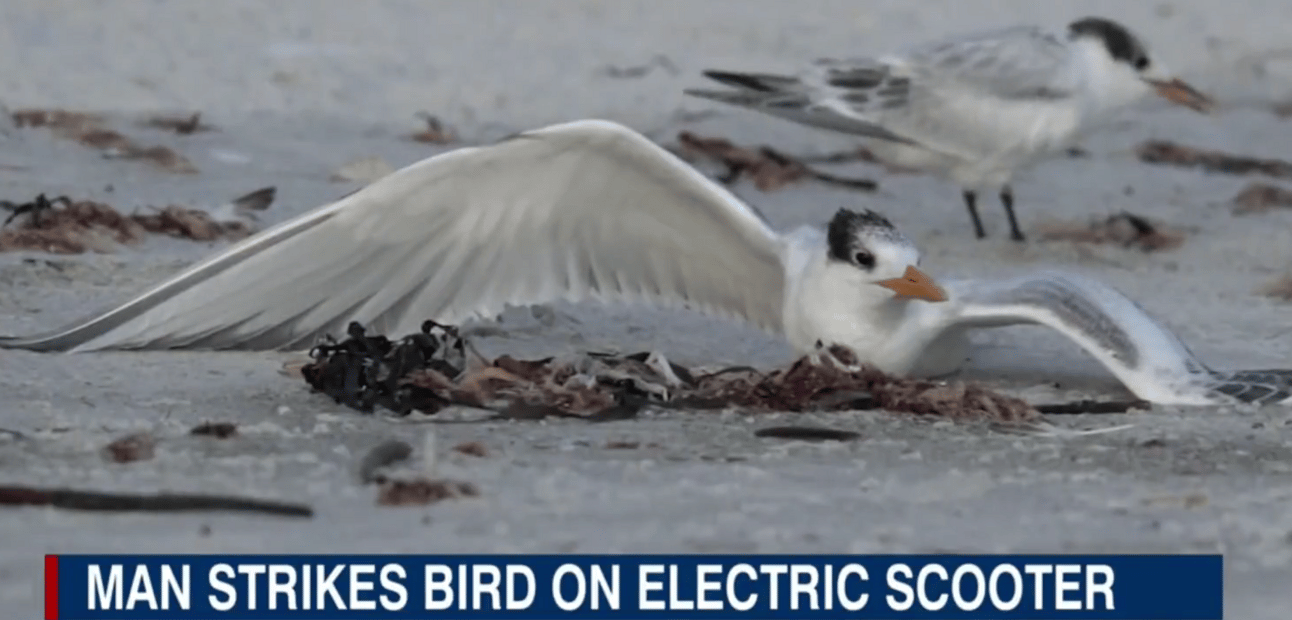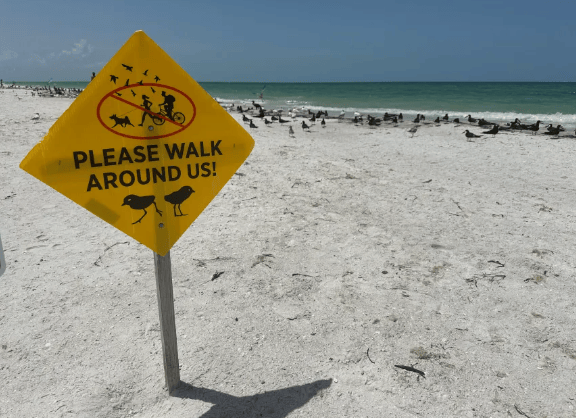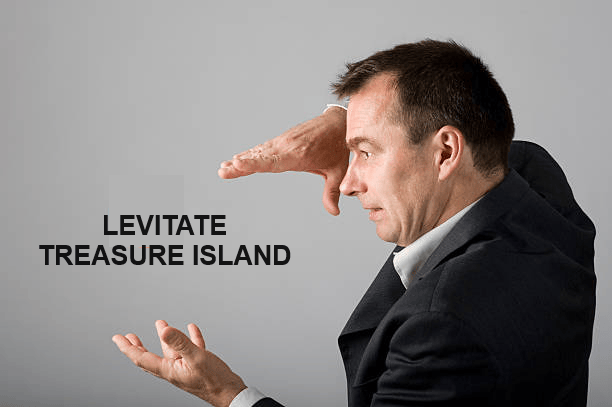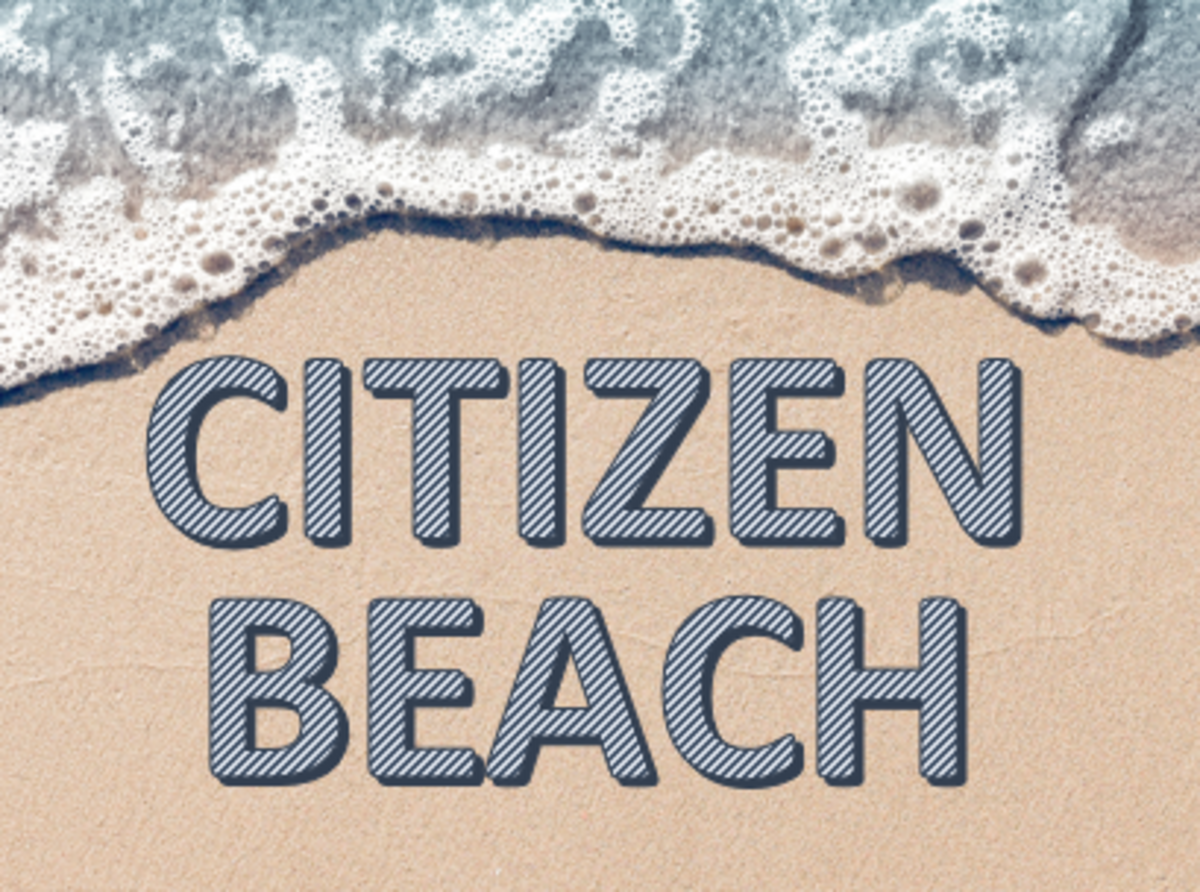Good morning! Welcome to Citizen Beach, providing independent news coverage of the best news and stories from the beachside communities of Pinellas County.
Happy 727 Day! Every year, on July 27, Pinellas County celebrates 727 (the local telephone area code). 727 Day celebratory specials include a full day of activities in the area, discounts, exclusive deals, promotions, and events. All the details, including over 100 deals available on 727 Day to savor, sip, sightsee, stay, shop, and self-care, are conveniently accessible at 727Day.com.
Was this email forwarded to you? If so, subscribe here: citizenbeach.beehiiv.com. If you're already a subscriber, reply to this email to let us know how we’re doing. NOTE: The newsletter is now being delivered at 10 a.m. on Saturday mornings.
Enjoying the Newsletter? Click Here to Buy Me A Coffee! Or, use this QR Code:

Thank you!
In Today's Email:
In the News: The Pinellas Gulf Beach Communities
I’ve captured all the key news impacting our beach communities this week, so you don’t miss anything important!
Body Found on Madeira Beach: On Tuesday, July 23, a passerby found the body of 31-year-old Hector Colon, a swimmer who was reported as in distress the night before, according to WTSP. Reportedly, a strong current caused the tragedy. Fire Departments from Treasure Island and Madeira Beach responded but had to suspend the search overnight. The body was found early Tuesday morning on the beach near Surf Side South, near Gulf Boulevard and 150th Avenue in Madeira Beach.
Road Outrage: Police in Indian Shores and the Florida Wildlife Commission are looking for a man who was illegally riding an electric scooter on the beach and “intentionally” drove into a flock of Sea Terns, killing one. For more on this sad event, see the story below. Bob Truesdell, a four-year Audubon Florida volunteer Bird Steward and local photographer, recorded the reckless act as it took place. Video on Fox 13, and on News Channel 8. The unidentified man faces a potential animal cruelty charge (a felony) and a $93 fine for riding a scooter on the beach.
Parking Fees in Sunset Beach, TI: Up until July 29, visitors can park in the residential streets of the Sunset Beach area of Treasure Island for free. Predictably, that’s a nightmare for residents. Free parking ends Monday, however. The City is instituting a $5 per hour charge via ParkMobile’s app (News Channel 8). For additional information on parking within TI, please visit https://www.mytreasureisland.org/parking.php. On a related issue, Indian Rocks Beach City Commission plans to discuss instituting paid parking.
Florida Schools Performing Better: Your kids in Pinellas County Schools? See how your child's school performed: School Grades (downloads an Excel file).
Hungry for Doing Good? Jersey Mike’s new sub shop in Dolphin Village in St. Pete Beach offers free regular subs today and tomorrow if you donate $3 or more to Tampa Bay Watch!
Pinellas County Drug Bust: “The amount of fentanyl getting out in Pinellas County is staggering,” Sheriff Bob Gualtieri said. “People should be concerned about the amount of drugs out there.” In Largo – just a 10-minute drive from the Gulf beaches – hundreds of pounds of drugs were found (Meth, cocaine, heroin, fentanyl, and more), along with over 100 dogs used in illegal dog-fighting rings. Drugs were shipped from LA via the US Post Office and FedEx. Airbnbs were rented throughout the county to receive the shipments. Six people were rescued from human trafficking.
Speaking of Human Trafficking: Florida ranks as the third-highest state for human trafficking and the second-highest for labor trafficking. Half of all human trafficking victims in Florida are minors. The average age of children forced into sex trafficking is 12-to-14 years old. If you believe you or someone you know is a victim of human trafficking, visit the National Human Trafficking Hotline, or call 1-888-3737-888. Or call the Florida Abuse Hotline at 1-800-96-ABUSE.
Road Outrage: E-Scooterist Kills, Terrorizes Shore Birds

Sea Tern Run Down by Reckless Driver of an E-Scooter
Electric Bikes, Scooters & Boards on the Beach – Illegal? Enforced?
Electric scooters can reach speeds ranging from a casual 10 mph to a jaw-dropping 90 mph. However, the average speed for most urban commuting electric scooters is around 15-30 mph (24-48 km/h), with the majority hitting around 20 mph (32 km/h).
How Fast is That? To better understand how fast 20 MPH is, you can travel 1,760 feet or about 586.67 yards in one minute when driving at 20 MPH. That distance is almost the length of five football fields laid end-to-end.
As e-scooters, hoverboards, and e-bikes become more popular, emergency rooms are seeing a surge in injuries related to them—fractures, contusions, burns, and cuts—continuing a multiyear trend, according to a report the U.S. Consumer Product Safety Commission released last year, which is based on data collected from U.S. hospitals. Injuries related to micromobility devices, including e-scooters, e-bikes, and hoverboards, have risen an estimated 23% each year since 2017, surging nearly 21% year-over-year in 2022.
There have been at least 233 deaths tied to these products from 2017 through 2022, but the count is likely higher as reporting is "ongoing and incomplete," CPSC said. Hospital emergency departments treated an estimated 360,800 injuries related to the products during that time. About 36% of the injuries during the six-year period involved kids 14 years and younger — double their 18% proportion of the overall population. Electric vehicle riders are also more likely to engage in riskier behaviors, like riding under the influence of alcohol, according to a Forbes article published this week.
Local Prohibitions
In St. Pete Beach, “micromobility” (electric scooters, bikes, etc.) can NOT be ridden on the beach. They are prohibited from riding on sidewalks, pedestrian walkways, and streets with posted speed limits of 25 mph or more without designated bike lanes. Also, riders must be at least 16 years of age to ride anywhere in the city.
In Treasure Island, micromobility devices are prohibited from operating on the beach. The city’s beach trail allows micromoblity vehicles, but they can only be operated at a top speed of 10 MPH.
Madeira Beach – I was not able to find any micromobility restrictions.
In Redington Beach, all motor vehicles, including micromobility devices, are prohibited on the beach within the town limits.
Are These Prohibitions Being Enforced?
While it’s good to have restrictions on the books for the safety and comfort of citizens and beach wildlife, many readers say that city and county police are rarely seen enforcing these laws. Many eyewitnesses say electric bikes, boards, and scooters are frequently seen operating on the beach – even when police patrol. Likewise, where dogs and smokers are prohibited on the beach.
The question then arises: Are the police doing their duty to enforce the laws on our beaches? What do you think?

After Several Hours of Suffering, the Bird Died
Protecting Our Seabirds
It is nesting season for beach-nesting shorebirds and seabirds, and people visiting our coastlines can help ensure nesting success by going around rather than through flocks of birds on the beach. Give beach-nesting birds at least 300 feet of space to avoid causing them to fly off, leaving hard-to-see chicks and eggs vulnerable to being stepped on and potential harm from being exposed to the elements and predators. Even when not nesting, shorebirds and seabirds use the beach as an important habitat for resting and foraging. Learn more ways to share the shore and help beach-nesting birds at MyFWC.com/Shorebirds.
The FWC takes wildlife violations very seriously and encourages the public to report them by downloading the FWC Wildlife Alert app, texting 847411 (Tip411) with the keyword “FWC” and information about the violation, calling the FWC’s Wildlife Alert Hotline at 888-404-FWCC (888-404-3922) or submitting a tip online: MyFWC.com/WildlifeAlert.
The Migratory Bird Treaty Act federally protects all shorebirds and seabirds nesting in Florida.

Eco Warrior Beach
Saving and protecting our natural environment — on the beach and off (Editors: Lisa Reich, Coastal Wildlife Advocacy Group) and Ginger Goepper (Audobon Society Volunteer)
Spotted Any Skimmers with Banded Legs on Our Beaches Lately?
By Ginger Goepper
Help us track shorebirds! Skimmer fledges sporting these new bands were born on St. Pete Beach this summer. Be on the lookout, take pictures, and send images with the location to Eckerd College's Dr. Beth Forys: [email protected]. Dr. Forys and her students are tracking their migration. Thanks!

A young Skimmer with a band on its leg
Rescue Beach
Rescuing and protecting our companion animals (Cats Editor: Monica Pugh; Dogs: editor needed)
Adopting Cats & Dogs: Financial Food for Thought
By Monica Pugh
Many of us have a pet we consider part of the family. Having a pet is usually a big source of joy and loving companionship.

But dog and cat owners don’t always anticipate how much the related expenses will be. Not budgeting the cost of properly maintaining a pet could result in unnecessary stress. And even worse, when someone does not have a clear notion of the potential expenses related to pet ownership, the pet could become a burden and subsequently suffer neglect or abandonment. Keeping pets out of shelters starts by planning to provide adequate care to your pet.
By the way, consider rescuing a pet from a shelter; it is often the best investment. Our local Animal Services Department adopts pets that have already been spayed/neutered, which could be one of the largest initial expenses of pet ownership.

Bringing a dog home is an exciting time for a family, but the first-year expenses can be particularly hefty. Depending on the new dog’s breed, size, and age, and whether the pet owner purchases from a breeder or adopts from a shelter, these expenses can range from $1,000 to $6,925. Smaller dogs in good health generally cost less than larger ones, while purebred, purchased dogs are more expensive than mixed breed, adopted dogs.
From a yearly standpoint, dog owners can expect to spend an average of $1,248 on their four-legged friends in 2024, according to a report published by financial website ValuePenguin. Most of the money is spent on veterinary care, averaging $387 for these services. After that, dog owners will spend an estimated $349 on food and $349 on products, the report says. "Other services" comprise about 12% of total dog spending, estimated at $149.78.

Meanwhile, cat owners are likely to spend slightly less than dog owners. When it comes to first bringing a cat home, families can expect the upfront costs to range from $400 to $2,810. This includes everything from adoption fees to spay or neuter surgery, microchipping, initial vet exams, and supplies.
Annually, those with a feline in their home will pay an estimated $836 in 2024, according to ValuePenguin’s report. The report estimates that products make up the largest share of these costs, with cat owners expected to spend an average of $326. Beyond that, cat owners will spend an estimated $259 on food and $217 at the vet.

Pet insurance costs an average of $720 a year for dogs and $384 for cats, with an overall average monthly cost of around $46 per month. Those estimates are based on prices from 21 national pet insurance providers and more than 17,330 quotes across all 50 U.S. states.
Planning for Pet Ownership
Owning a pet is a rewarding experience, but it's important to plan for the financial responsibilities that come with it. By budgeting for your pet's needs, you can ensure they receive the best care possible, reducing the risk of financial strain and preventing neglect or abandonment. Consider the costs outlined above and factor them into your monthly expenses.
Adopting a pet from a shelter is not only a compassionate choice but also a cost-effective one. Shelter pets are often spayed or neutered and come with initial veterinary care, which can save you significant upfront costs.
Investing in pet insurance can also provide peace of mind and may help cover unexpected medical expenses. Regularly revisiting your budget and adjusting for any changes in your pet's needs will help you stay prepared and ensure a happy, healthy life for your furry family member.
By planning ahead and understanding the true costs of pet ownership, you can enjoy the companionship of your pet without financial worries, keeping both you and your pet out of shelters and in a loving home where you both belong.

Alternatives to Surrender: The Humane Society of Pinellas offers resources for people to use for their pets if they are experiencing financial difficulties or emergency housing situations.
City Beach
Empowering our local communities through informed and active engagement to address local challenges and foster self-reliance.
St. Pete Beach, District 2 Race
Report from Lisa Robinson, Candidate
“My campaign has rolled out with such positive feedback and outpouring of support, and it’s been overwhelming. We’ve knocked on over 800 doors and have met folks anywhere from 18 to 99 years old. I am so encouraged and proud to stand with the residents of St Pete Beach!”
Advocacy: Citizens’ Voice of Treasure Island
Elevate TI Workshop: The Treasure Island City Commissioners will be reviewing and discussing Elevate TI on Tuesday, July 30th, 2024, at a 2 p.m. workshop in City Hall. Please consider attending to voice your opinion.
Questions: The following simple questions need to be answered before moving forward with a 423-page document that is full of unintended consequences:
Where has any program like Elevate TI been successfully implemented in Florida or anywhere along the Eastern Seaboard?
Who is going to pay for the cost of Elevate TI?
Why are City of Treasure Island officials, who do not live in Treasure Island, trying to force TI Residents out of their single-story ranch homes by increasing the required time between construction permits under the FEMA 50% rule?
Why should Elevate TI be a mandated requirement versus an aspirational goal?
Why did the City of Treasure Island spend countless hours and hundreds of thousands of dollars with consultants on a plan to renovate Treasure Bay but did not include in their bid packages raising 2,000 linear feet of seawall to their own Elevate TI standard of five feet (seawall height)?
Why do City officials believe they have the necessary technical expertise or resources to be the first municipality in the state of Florida on a project like this?
Is there relief provided by the FEMA 50% rule for individuals who simply want to bring in fill dirt to raise their house up to the new base elevation standard provided by Elevate TI?
CVTI supports non-mandated, aspirational goals for bringing in fill dirt and raising seawall heights. This can easily be accomplished with a simple three- or four-page document removing the ill-conceived “No Fill Dirt on TI” Ordinance. We do not need 423 pages of building code changes that will only frustrate everyone trying to build in TI, as well as the current TI residents.
Elevate TI should not be required or mandated for TI residents.

Have the City Commissioners read all 423 pages?
Schedule of Upcoming City Meetings:
July 30, 2024, 2 p.m. ﺍ City Commission Workshop to Discuss the Terrain Modification Program
August 8, 2024, 12 Noon or 6 p.m. ﺍ Local Planning Agency Board: Presentation of all ordinances related to Terrain Modification Program
August 15, 2024, after 2 p.m. P&Z Meeting ﺍ Local Planning Agency Board: Consider approval of all ordinances related to the Terrain Modification Program
August 20, 2024, 6 p.m. ﺍ City Commission 1st reading of all ordinances related to the Terrain Modification Program
September 3, 2024, 6 p.m. ﺍ City Commission 2nd reading of all ordinances related to the Terrain Modification Program
City of Treasure Island Commissioners and Mayor Contact Information:
Tyler Payne, Mayor - (727) 748-5062, email: [email protected]
Deb Toth, Commissioner District 1 – (727) 748-5178, email: [email protected]
John Doctor, Commissioner District 2 – (727) 340-0115, email: [email protected]
Bob Minning, Commissioner District 3 – 727-748-6281, email: [email protected] [email protected]
Arden Dickey, Commissioner District 4 – (727)748-6368, email: [email protected]
The Tortuga Speaks
The City of Treasure Island is considering a program called "Elevate Treasure Island," which aims to implement terrain modification by requiring the use of fill material during redevelopment projects. This proposal seeks to address concerns related to flooding and erosion by modifying the island's topography, ostensibly to enhance resilience against future climate impacts.

While the intention behind "Elevate Treasure Island" might seem beneficial at first glance, it is essential to evaluate its necessity and cost implications critically. Here are several reasons why this program might not be needed at this time and could be considered too costly to pursue:
High Financial Burden: The implementation of such a terrain modification program will require significant financial investment from both the City and property owners. Costs associated with acquiring fill material, engineering studies, and construction could run into millions of dollars. For a small city like Treasure Island, this expenditure might divert funds from other critical areas like public safety, infrastructure maintenance, and community services.
Questionable Efficacy: Elevating land might not provide the long-term protection against flooding that proponents suggest. Given the complexities of coastal hydrodynamics, elevation alone may not mitigate flood risks effectively, especially if the sea levels are really rising and if storm intensity increases. Instead, investing in comprehensive flood management strategies, such as improved drainage systems and natural barriers, would likely offer more sustainable solutions.
Environmental Impact: Introducing large amounts of fill material can disrupt the local ecosystem. The barrier islands of Pinellas County, including Treasure Island, are home to diverse flora and fauna that could be adversely affected by significant alterations to the terrain. Additionally, the process of sourcing and transporting fill material can lead to environmental degradation elsewhere.
Community Disruption: Mandating terrain modification during redevelopment could place a heavy burden on property owners, particularly those looking to rebuild or renovate their homes. This requirement could lead to increased construction costs and potential delays, discouraging property improvements and development.
Alternative Measures: There are less invasive and potentially more cost-effective measures to enhance the island's resilience to flooding and erosion. These include reinforcing existing seawalls, restoring natural wetlands, and implementing stricter building codes to ensure new constructions are resilient to storm and flooding impacts.
While "Elevate Treasure Island" may seem to address legitimate concerns about flooding and erosion, the program's high costs, potential inefficacy, environmental impact, and community disruption suggest that alternative measures should be considered first. It is crucial for the City to consider setting aside this massive program, and instead engage with residents and experts to explore more balanced and sustainable approaches to safeguarding Treasure Island's future.

This is an opinion piece. Readers are encouraged to conduct their own research and form their own opinions.
Enjoying the Newsletter? Click Here to Buy Me A Coffee!
Thank you!
Thank you for reading! Please send your comments, questions, and article ideas to [email protected].
Citizen Beach: Independent Local Journalism

